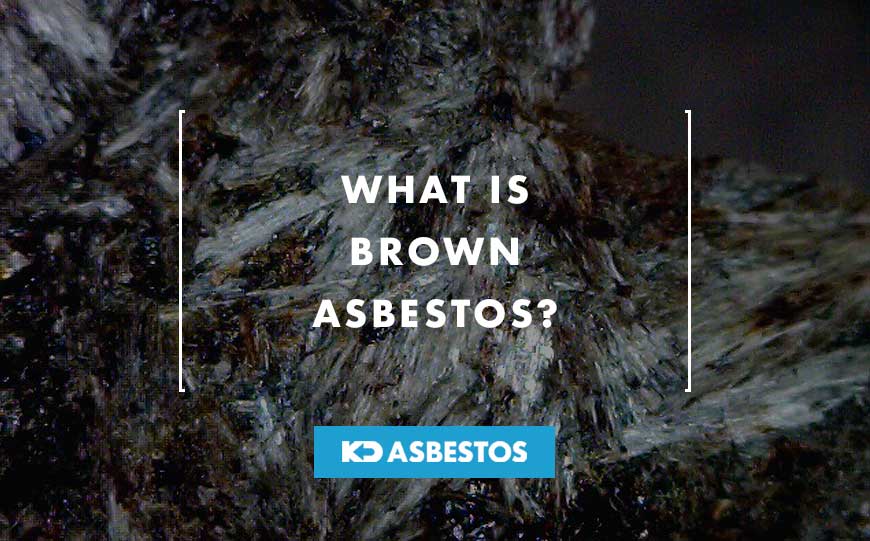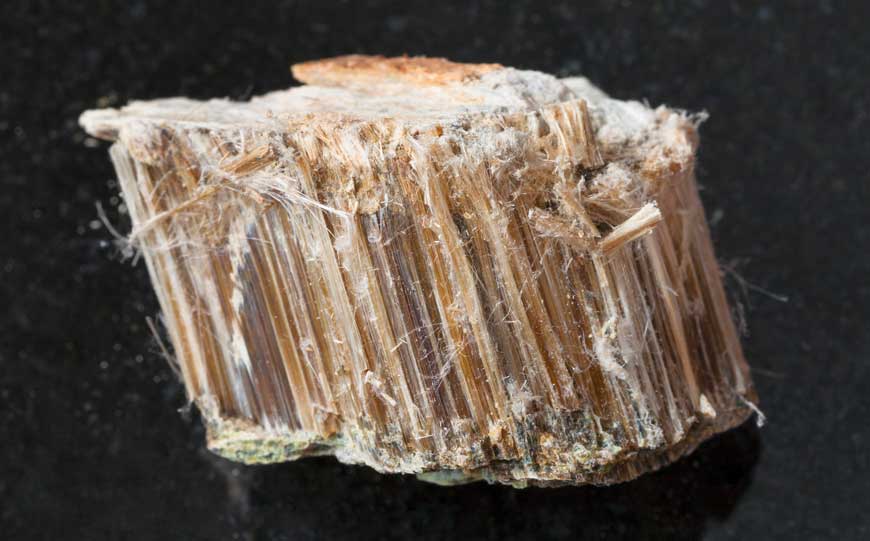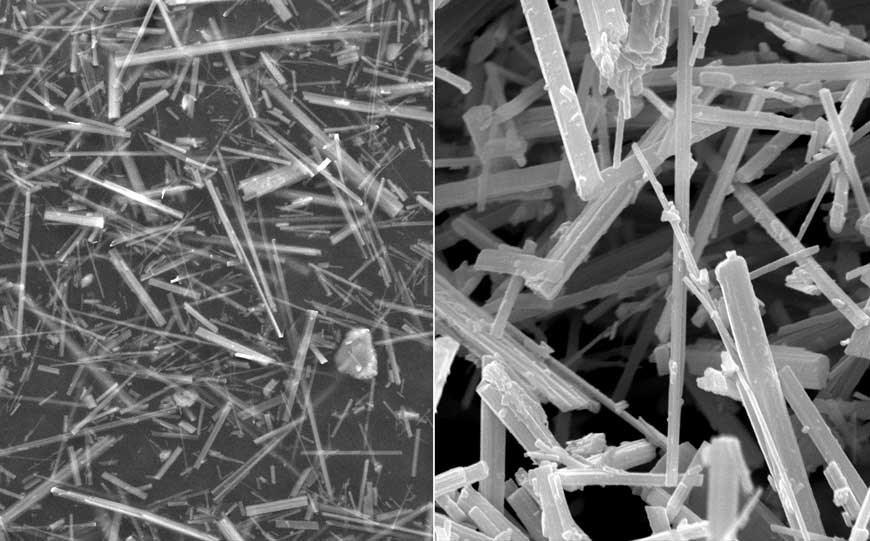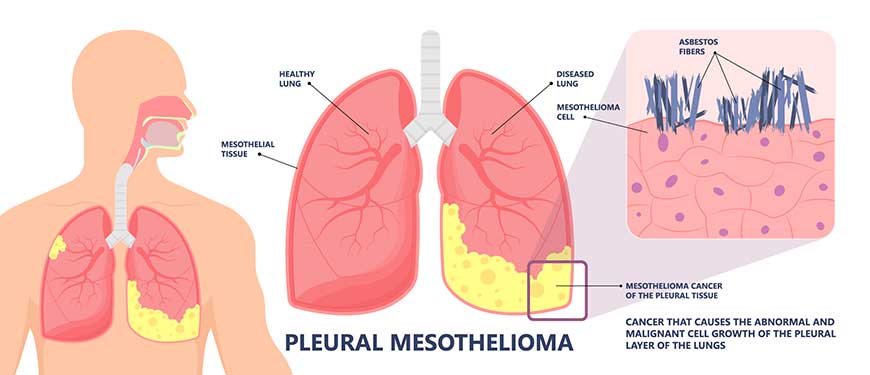
Brown asbestos, also known as amosite, is a type of asbestos that’s part of the amphibole group of fibrous silicate minerals.
It is brown in colour and has a harsh, spiky texture.
It’s a fibrous mineral that was widely used in construction and insulation materials, particularly in the mid-20th century.
Like other types of asbestos, brown asbestos is hazardous to human health when its fibres are inhaled.
It has been linked to a number of respiratory diseases, including lung cancer and mesothelioma.
Brown asbestos was banned in the UK in 1985, although voluntary bans on its use came into force earlier than this.
In this article, we take a deeper look into what brown asbestos is, where it’s typically found and its potential danger to health.
Table of Contents
What is the Amosite Group of Minerals?

Brown Asbestos Fibres. Image credit: Shutterstock
Amosite is a group of minerals that includes grunerite, ferroactinolite, and cummingtonite.
These minerals are part of the amphibole group and are commonly known as brown asbestos.
Amosite, also known as brown asbestos, is the most common form of asbestos in the amphibole group and was used in a wide range of industrial applications until it was banned in many countries due to its harmful health effects.
The amosite group of minerals is named after the location where the minerals were first discovered, which is in the Asbestos Mountains in South Africa.
Where was Brown Asbestos Used?

Magnified Amosite Fibres. Image credit: USGS
Brown asbestos was mostly used for insulation purposes, particularly for high-temperature applications.
It was used in thermal insulation, fire protection, and electrical insulation products due to its high heat resistance and durability.
Brown asbestos was also used in construction materials such as cement sheets, roofing, and ceiling tiles.
Sprayed coatings, lagging, and insulating boards have a higher likelihood of containing brown asbestos (amosite) fibres or blue asbestos (crocidolite) fibers, which have a higher risk compared to white asbestos (chrysotile) fibres.
This is why amosite and crocidolite were banned more than 10 years earlier.
Typical examples of where brown asbestos was used include:
Construction Materials
Brown asbestos was commonly used in construction materials such as insulation, ceiling tiles, roofing materials, and cement sheets.
Shipbuilding
Brown asbestos was also used extensively in shipbuilding, particularly in insulation, fireproofing materials, and electrical components.
Automotive Industry
Asbestos was also widely used in the automotive industry, including brake linings, clutch facings, and gaskets.
Industrial Equipment & Machinery
Brown asbestos was used in various types of industrial equipment and machinery, such as boilers, turbines, and pumps.
Household Appliances
Asbestos was used in various household appliances such as toasters, hair dryers, and ovens.
Amosite can also be found in the following products:
- Cement
- Chemical insulation
- Electrical insulation
- Fire protection
- Gaskets
- Insulation boards
- Plumbing insulation
- Roofing
- Thermal insulation
- Tiles
Is Brown Asbestos Dangerous to Health?

Image credit: Shutterstock
Brown asbestos is considered one of the most hazardous types of asbestos due to its sharp, needle-like fibers that can easily penetrate the lung tissue when inhaled.
These fibers can cause severe respiratory illnesses, including mesothelioma, asbestosis, and lung cancer.
The danger of brown asbestos to human health has been recognised for many years, and in many countries, it has been banned since the 1980s.
However, due to its widespread use in the past, brown asbestos can still be found in older buildings, insulation, and other construction materials.
When brown asbestos fibers are disturbed, they can easily become airborne and inhaled by people in the vicinity.
This can lead to the development of serious respiratory diseases, even if the exposure is only brief.
The risk of developing asbestos-related symptoms is directly related to the duration and intensity of the exposure.
However, it’s important to note that there is no safe level of exposure to asbestos, and any exposure can increase the risk of developing an illness.
It’s also important to note that asbestos-related diseases can take decades to develop, so individuals who were exposed to brown asbestos in the past may not experience symptoms until many years later.
Conclusion
Brown asbestos is a highly dangerous material that can cause severe respiratory illnesses when inhaled.
It has been banned in many countries, but can still be found in older buildings and construction materials.
If you suspect that brown asbestos is present in your home or workplace, it’s essential that you contact a fully qualified and licensed asbestos professional to conduct surveys and testing.
Attempting to remove brown asbestos on your own can release harmful fibres into the air and put yourself and others at risk.
It’s always better to remain on the side of caution when it comes to the health and safety of yourself and those around you.
By taking the necessary precautions and seeking the help of professionals, you can ensure that the removal of brown asbestos is done in a safe and controlled manner, minimizing the risk of harm to you and your loved ones.